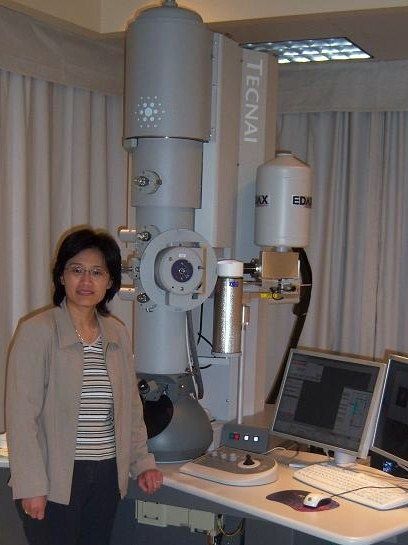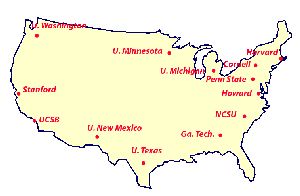Visiting a Nano Lab
Behind the Scenes at a Nano Lab
Mack Carter, Program Manager for the NanoTech User Facility at the University of Washington in Seattle has a passion for getting the word out about the equipment available at his lab. This facility is part of the National Nanotechnology Infrastructure Network (NNIN), whose goal is to support nanotechnology research. Mack was gracious enough to invite me to visit UW’s NanoTech User Facility recently, and I eagerly accepted.
On a rare sunny Seattle day in May, I made my way across Puget Sound and over to the University of Washington campus. Mack and Dr. Qiuming Yu, the Lab Manager, started by filling me in on their program and giving me a tour of the lab. Researchers can use the lab and its sophisticated instruments at a surprisingly low cost; in fact, the hourly price tag for using the lab is actually below the cost of the service contracts required to maintain the instruments. The facility makes up the difference from their funding through the National Science Foundation and the University of Washington.
Though I was lucky enough when I worked in the semiconductor industry to have access to this level of equipment at my company, not every company can afford such an investment. For them the lab provides a cost-effective way to pursue nano research. The instruments that industrial or academic researchers can take advantage of include:
The lab’s newest instrument is the Transmission Electron microscope shown here.

Dr. Quimming Yu at the Transmission Electron Microscope
In one case the lab allowed a user to attach an extra module to one of their AFMs to provide additional capability that the company needed for their research project. My hosts laughed when I asked if the module was left on the AFM to provide the extra capability to other researchers when the study was over. Apparently they do allow you to remove your equipment when you leave.
The facility provides training to qualify researchers on the equipment. If you want to send a few researchers to the NanoTech User Facility for an extended time to run their own tests, you can even get office space free of charge. If you’re not a hands-on type, the lab will have their staff run your tests for you. For example, say you send them a sample and their staff runs tests. The output of the SEM could then be displayed to you online so that you can sit back in your office and view the results. This capability allows you to make suggestions to the staff member running the SEM in real time as the results come in to optimize the analysis.
Mack Carter informed me that each lab in the National Nanotechnology Infrastructure Network has its own area of focus. The Nanotech User Facility takes advantage of expertise at the University of Washington to focus on applications of nanotechnology in biology. This emphasis on biology is evident in some of the capabilities at the NanoTech User Facility. For example they demonstrated how the laser confocal microscope provides optical photos of the inside of a cell, and can be used to determine whether quantum dots have penetrated into the cell (they deduce this from the location of the dots’ emissions). Another interesting demonstration of their biological focus was their ability to make arrays of square Petrie dishes small enough to allow testing of individual cells.
The lab offers an inexpensive way to gain access to highly sophisticated instruments and expertise. If you are interested in contacting the lab about using their facility you can e-mail Dr. Qiuming Yu at qyu@u.washington.edu.
In addition to the NanoTech User Facility at the University of Washington there are twelve other nanotechnology labs that are part of the National Nanotechnology Infrastructure Network and one of these labs may be located close to you. These locations are shown on the map below.

You’ll find links to each of these NNIN labs on my Nanotechnology Research Lab page.
- Home
- Nanotechnology Introduction
- Nanotech Applications:
- Medicine
- Air Quality
- Water Quality
- Energy
- Electronics
- Space
- Food
- Consumer Products
- Chemical Sensors
- Molecular Manufacturing
- MEMS
- Nanotech Companies
- Nanotech Jobs
- Nanotech Articles
- Nanotech Research
- Nanotech Resources
- Nanotech Events
- Lesson Plan
- About Us
- Sponsor
- Disclaimer


